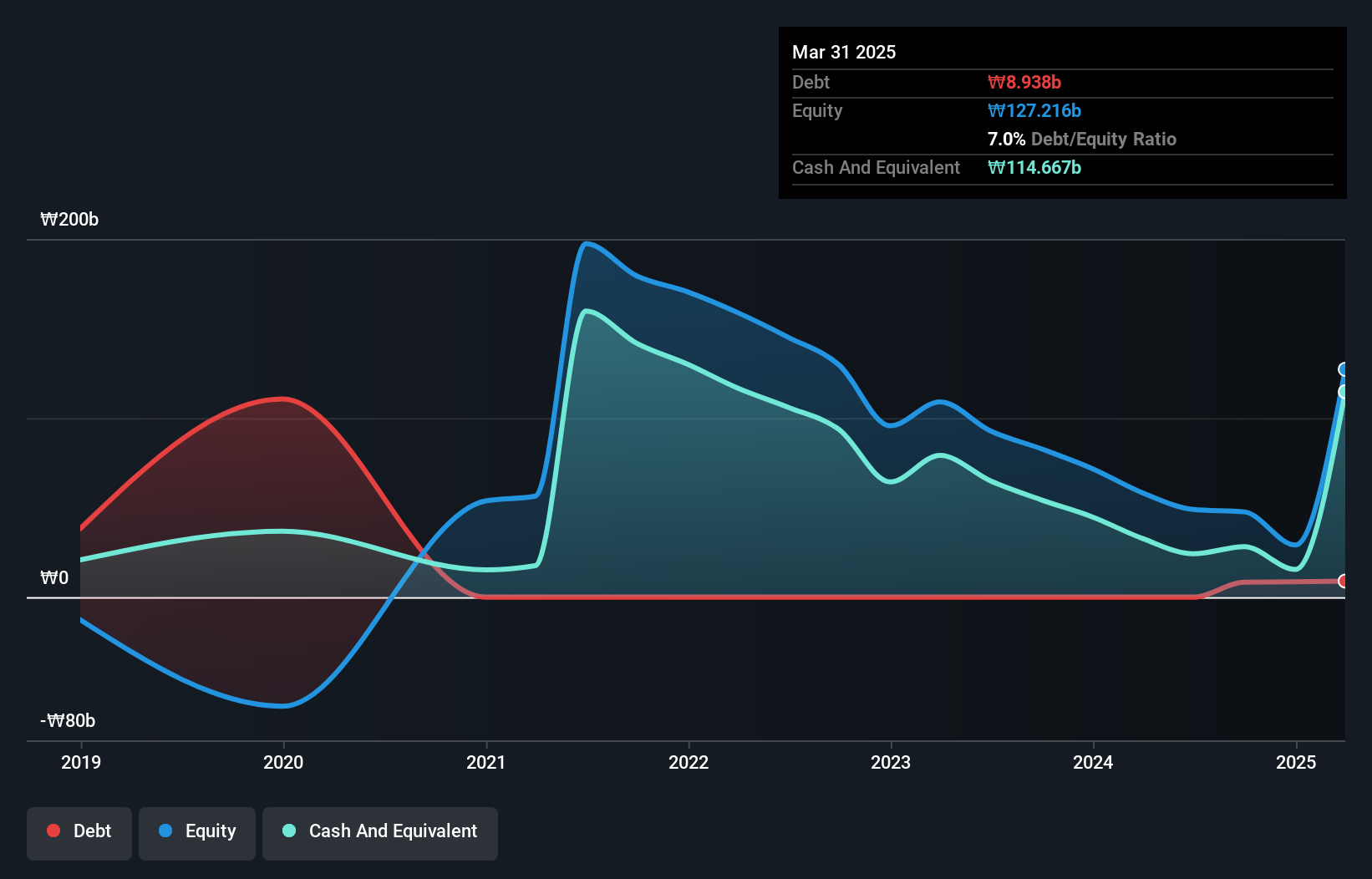
David Iben put it well when he said, 'Volatility is not a risk we care about. What we care about is avoiding the permanent loss of capital.' So it seems the smart money knows that debt - which is usually involved in bankruptcies - is a very important factor, when you assess how risky a company is. Importantly, GI Innovation, Inc. (KOSDAQ:358570) does carry debt. But should shareholders be worried about its use of debt?
What Risk Does Debt Bring?
Generally speaking, debt only becomes a real problem when a company can't easily pay it off, either by raising capital or with its own cash flow. In the worst case scenario, a company can go bankrupt if it cannot pay its creditors. While that is not too common, we often do see indebted companies permanently diluting shareholders because lenders force them to raise capital at a distressed price. Having said that, the most common situation is where a company manages its debt reasonably well - and to its own advantage. When we think about a company's use of debt, we first look at cash and debt together.
What Is GI Innovation's Net Debt?
As you can see below, at the end of March 2025, GI Innovation had ₩8.94b of debt, up from none a year ago. Click the image for more detail. However, it does have ₩114.7b in cash offsetting this, leading to net cash of ₩105.7b.

How Healthy Is GI Innovation's Balance Sheet?
Zooming in on the latest balance sheet data, we can see that GI Innovation had liabilities of ₩13.9b due within 12 months and liabilities of ₩3.37b due beyond that. On the other hand, it had cash of ₩114.7b and ₩6.92b worth of receivables due within a year. So it actually has ₩104.3b more liquid assets than total liabilities.
This short term liquidity is a sign that GI Innovation could probably pay off its debt with ease, as its balance sheet is far from stretched. Succinctly put, GI Innovation boasts net cash, so it's fair to say it does not have a heavy debt load! There's no doubt that we learn most about debt from the balance sheet. But you can't view debt in total isolation; since GI Innovation will need earnings to service that debt. So if you're keen to discover more about its earnings, it might be worth checking out this graph of its long term earnings trend.
See our latest analysis for GI Innovation
Over 12 months, GI Innovation made a loss at the EBIT level, and saw its revenue drop to ₩212m, which is a fall of 96%. That makes us nervous, to say the least.
So How Risky Is GI Innovation?
By their very nature companies that are losing money are more risky than those with a long history of profitability. And we do note that GI Innovation had an earnings before interest and tax (EBIT) loss, over the last year. And over the same period it saw negative free cash outflow of ₩42b and booked a ₩57b accounting loss. While this does make the company a bit risky, it's important to remember it has net cash of ₩105.7b. That means it could keep spending at its current rate for more than two years. Overall, its balance sheet doesn't seem overly risky, at the moment, but we're always cautious until we see the positive free cash flow. The balance sheet is clearly the area to focus on when you are analysing debt. However, not all investment risk resides within the balance sheet - far from it. Be aware that GI Innovation is showing 3 warning signs in our investment analysis , and 1 of those is potentially serious...
At the end of the day, it's often better to focus on companies that are free from net debt. You can access our special list of such companies (all with a track record of profit growth). It's free.
New: Manage All Your Stock Portfolios in One Place
We've created the ultimate portfolio companion for stock investors, and it's free.
• Connect an unlimited number of Portfolios and see your total in one currency
• Be alerted to new Warning Signs or Risks via email or mobile
• Track the Fair Value of your stocks
Have feedback on this article? Concerned about the content? Get in touch with us directly. Alternatively, email editorial-team (at) simplywallst.com.
This article by Simply Wall St is general in nature. We provide commentary based on historical data and analyst forecasts only using an unbiased methodology and our articles are not intended to be financial advice. It does not constitute a recommendation to buy or sell any stock, and does not take account of your objectives, or your financial situation. We aim to bring you long-term focused analysis driven by fundamental data. Note that our analysis may not factor in the latest price-sensitive company announcements or qualitative material. Simply Wall St has no position in any stocks mentioned.
About KOSDAQ:A358570
GI Innovation
A bio-venture company, engages in the research and development of protein new drugs.
Flawless balance sheet low.
Market Insights
Community Narratives



